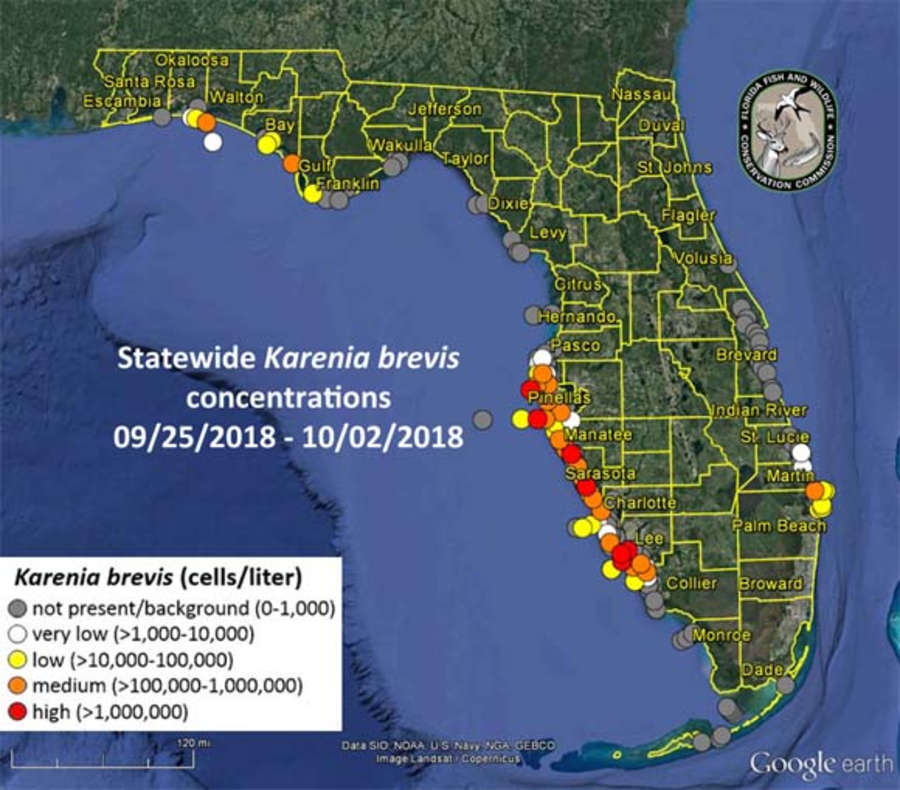JACKSONVILLE, Fla. – Dozens of beaches across Florida were closed on Thursday as red tide continues to spread along the state's Atlantic and Gulf coasts.
The red tide outbreak is the worst to hit the state since 2006, and it has fishermen in Northeast Florida worried that their way of life could soon be impacted.
Griffin Sallmen, who's been fishing around Mayport his whole life, fears his hobby could come screeching to a halt if currents and winds bring the red tide any farther north.
He's already seen the devastating impact of the outbreak firsthand.
"We go down to Sebastian Inlet on the Gulf Coast, and we go snook fishing down there and fishing has been destroyed this year," said Sallmen.
In recent months, concentrations of Karenia brevis -- the red tide organism -- have been found along Southwest Florida's coast. This week, the bloom surfaced along the shores of Palm Beach County.

Fears of the red tide's spread have also been felt along the Gulf Coast, where communities depend on seafood as a staple industry.
"It definitely scares me," Sallmen said. "All of the professional fishermen out there, all of the guides have taken a hit and business has taken a hit. It's pretty bad."
At My Way Seafood in Panacea, the fish is always fresh and the selection large. But now customers are asking if red tide is a problem.
"As long as the fish are caught alive, they are not harmed," said employee Debbie Long. "Shrimps and crabs, red tide does not bother."
Concern about the health of seafood is spreading, just as the red tide inches closer to what used to be the oyster capital of Florida, Apalachicola Bay. The remaining oystermen are limited to two bags a day.
"Once red tide moves into our bay, they'll shut our bay down for harvesting," said Shannon Hartsfield, president of the Franklin County Seafood Workers Association.
"It won't kill the oysters," added Hartsfield, "but the oysters won't be fit for consumers."
If easterly winds persist, lower concentrations of red tide blooms could make their way to the coastline in Northeast Florida, though perhaps not as prevalent as they have been on the other side of the state.
"I’m really hoping it doesn’t affect us here on the home front, but it very well might," said Sallmen.
The Florida Fish and Wildlife Conservation Commission is monitoring the outbreak, performing tests on the Atlantic Coast as far north as Volusia County. But no red tide has been found on beaches there.
On Thursday, Gov. Rick Scott said the Department of Environmental Protection would steer $3 million in relief funding to Broward, Martin, Miami-Dade, Palm Beach and St. Lucie counties.
If you happen to discover a dead fish along the shores, the FWC says don’t touch it, but instead report your findings to their fish kill hotline at 1-800-636-0511.



